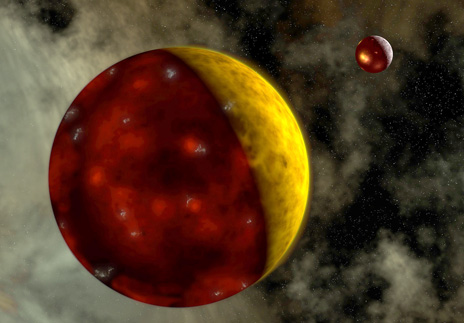A young Earth is shrouded in turbulent, roiling clouds, while under the shadow of its night side can be seen flashes of lightning and the ruddy glow of volcanoes and lava fields illuminating the clouds from beneath. The space around the Earth is highlighted by remnants of the nebula from which the Solar System was born. On the upper right is the Earth’s Moon whose lava-filled scars from massive impacts are still cooling.
500 million years after its molten birth the Earth’s surface would have cooled enough for a solid crust to form, and gases delivered by comets and emissions from within would have contributed to the Earth’s first, albeit primitive, atmosphere.
(Visited 12 times, 1 visits today)

